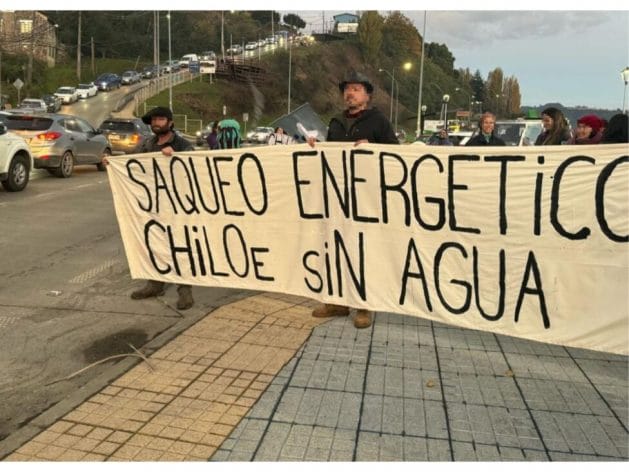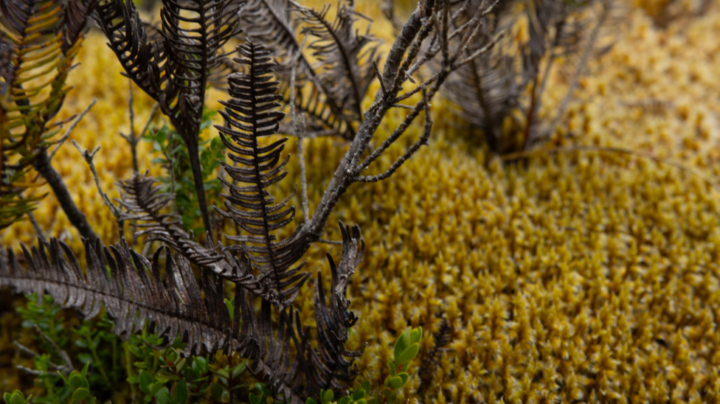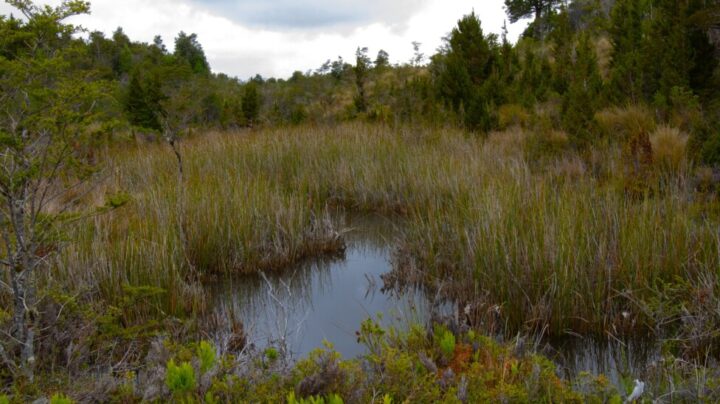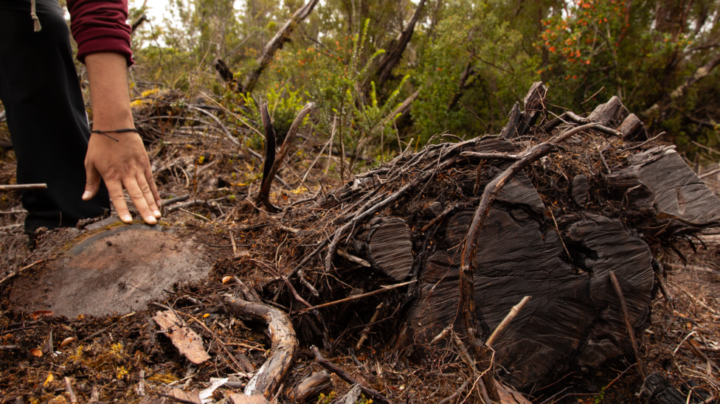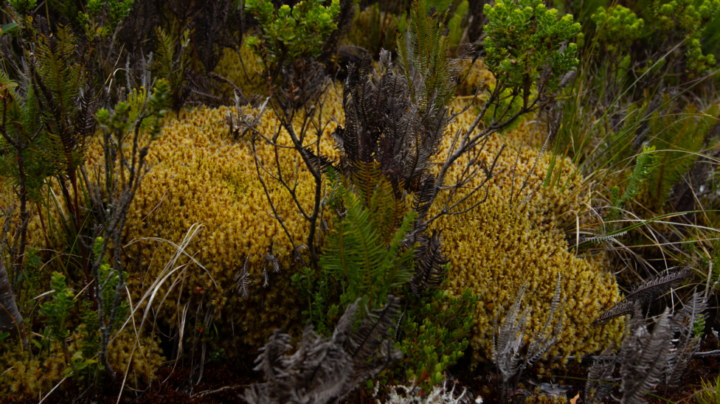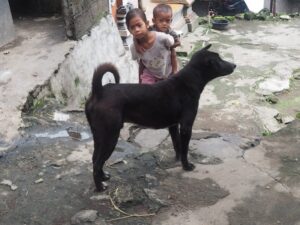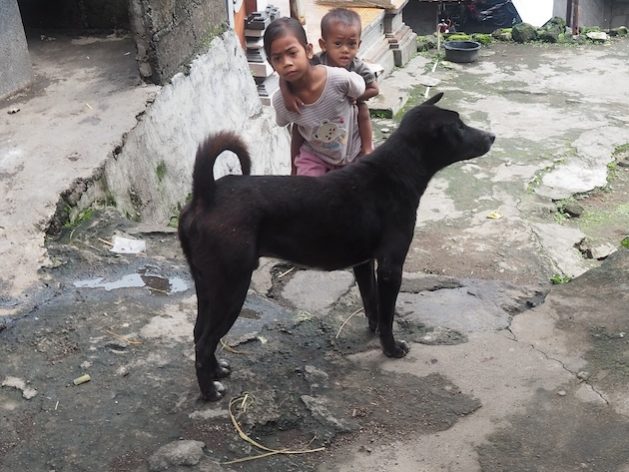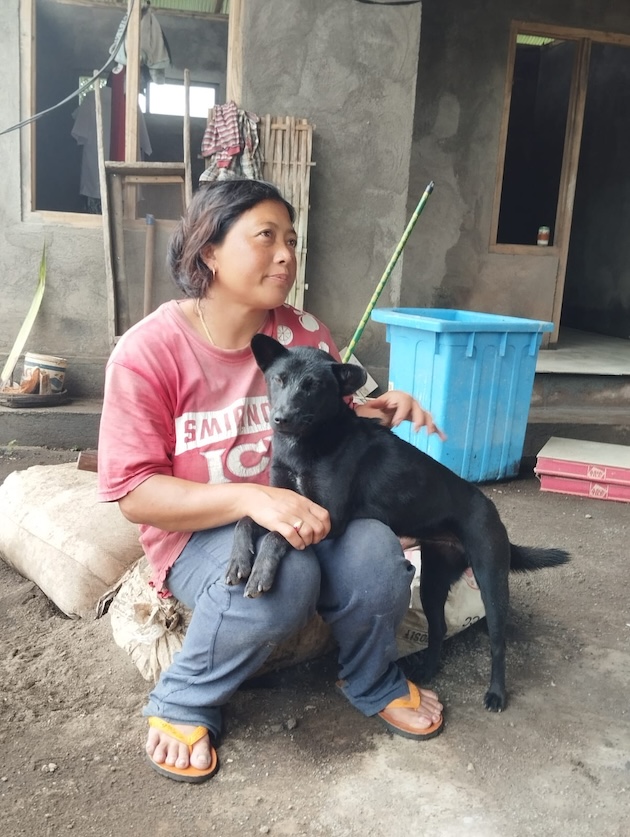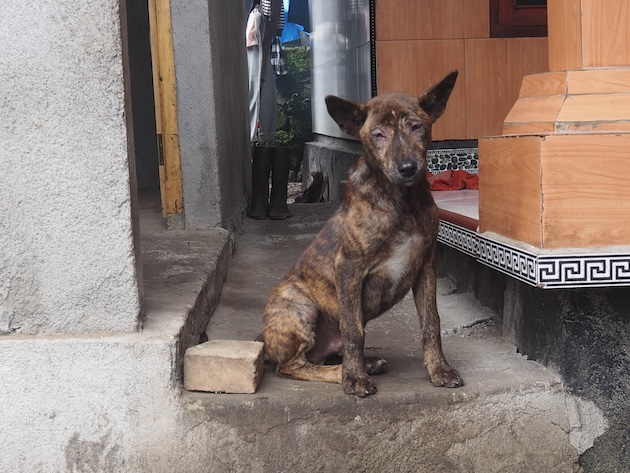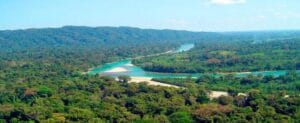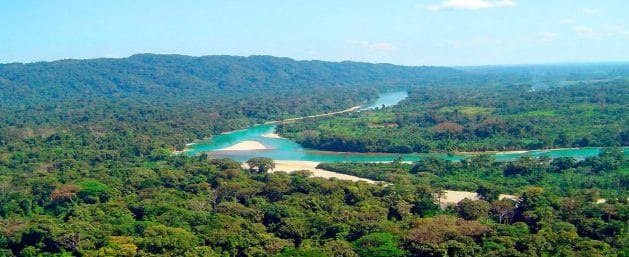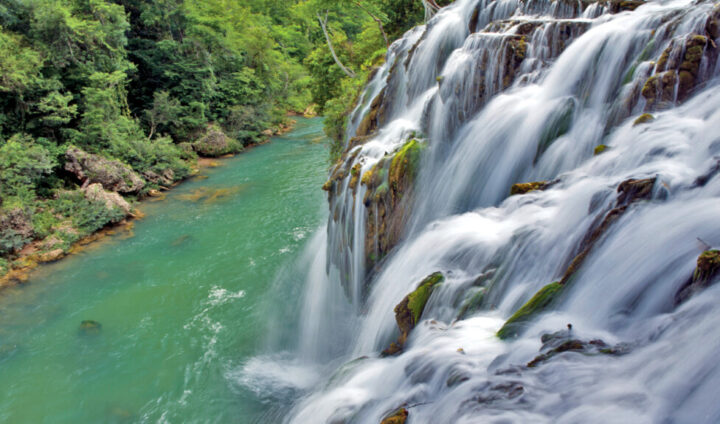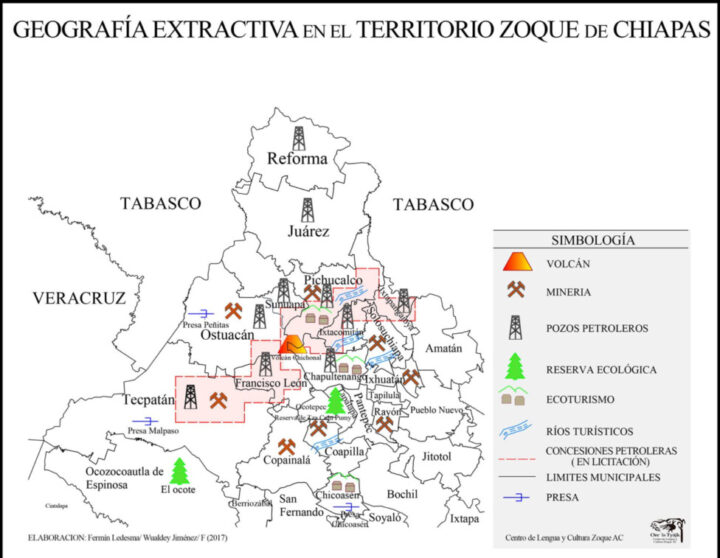
Arts, Asia-Pacific, Civil Society, Conservation, Environment, Featured, Food and Agriculture, Food Security and Nutrition, Headlines, Natural Resources, Religion, Sustainable Development Goals, TerraViva United Nations

The Vijayanagar rulers constructed an earth-fill dam in 1530 AD to create Dhamapur Lake. There is now a campaign to save it. Credit: Rina Mukherji/IPS
– Dhamapur is a small village in Malvan taluka of west Sindhudurg district, housing the famous Dhamapur Lake. The Vijayanagar kings constructed an earthfill dam in 1530 A.D., creating a man-made lake surrounded by hills on three sides. Canals connect it to the Karli river, irrigating lush paddies and farms that grow the red Sorti and Walay rice varieties typical to the region.
A Bhagwati temple constructed in the typical Konkan style stands on its banks. Small shrines to anthills flank this temple, which is devoted to Goddess Bhagwati. This is because all over the Konkan region, anthills are considered manifestations of the Earth Goddess and worshipped as Goddess Sateri. These are monuments to biodiversity and well-being; white ants or termites that build anthills are known to aerate the soil, help seed dispersal, and improve soil fertility. The worship of anthills is an old Vedic practice that continues to survive in and around the Konkan region of Maharashtra, Goa, and its neighborhood to this day.
The construction of the earthfill dam on Dhamapur Lake too spells of local ingenuity. Made up of porous laterite stone that is locally found here, every layer of stone is alternated with a layer of biomass made of twigs and branches.
This freshwater reservoir, used for irrigation and drinking water purposes, is one of Maharashtra’s oldest engineering marvels. Its waters and the Kalse-Dhamapur forests that flank it nurture a wide variety of unique floral and faunal species, making it a popular tourist destination.
But beauty apart, this man-made lake, which is geographically on higher ground as compared to the surrounding countryside, plays an important role in recharging the groundwater, acting as a sponge during the monsoons. Apart from serving as an important source of drinking water and irrigation, Dhamapur Lake nurtures an entire ecosystem. Its waters and surrounding forests harbour a wide variety of flora and fauna, some of which are endangered species. Its significance can be gauged from the fact that it was given the Word Heritage Irrigation Structure (WHIS) Award by the International Commission of Irrigation and Drainage (ICID) in 2020.
But in recent times, several encroachments have affected this extensive waterbody. Guest houses, wells, and walkways built in its floodplains to boost tourism have been eating into its extensive area, in scant regard to the flora and fauna that thrive in its pristine waters.
Fighting for Dhamapur Lake
In recent years, though, Dhamapur Lake has found a savior in Sachin Desai and his organisation, Syamantak Trust. Incidentally, Sachin Desai and his wife, Meenal, have an interesting background that illustrates their love for the natural world and India’s time-honored traditions.
Believers in home schooling, the Desais fought out with the authorities to home-school their daughter. Abandoning high-paying corporate jobs, these two professionals set up the University of Life on their ancestral property to familiarize youngsters with traditional bricklaying, carpentry and farming skills in 2007. To stem the migration from the region, they sought to inculcate love and respect for traditional practices, foods, and cuisine among youngsters. This was how the Syamantak Trust came into being.
In the years that followed, learners and youngsters who spent time at the University of Life went to use the knowledge they acquired to specialize in respective fields or venture into entrepreneurship, selling local products to tourists frequenting Dhamapur. Rohit Ajgaonkar, once a student at the University of Life, has become an active volunteer with Syamantak and runs a small eco-café in Dhamapur. Remarkable in its use of local materials, the eco-café has an array of local delicacies such as kashayam and jackfruit, wood apple, and mango ice creams.
Rohit and his mother, Rupali Ajgaonkar, also run a shop adjoining their eco-café, wherein they sell hand-pounded local masalas, mango and jackfruit toffee, local pickles, cashew butter, kokum syrups and kokum butter. Prathamesh Kalsekar, another student of the University of Life who is the son of a local farmer, is now doing his B.Sc. (Agriculture) at the Konkan Krishi Vidyapeeth. He has raised a private forest on his family land in Dhamapur, and now grows many local fruit and vegetable trees, bushes, and plants, particularly focusing on nutrient-rich wild varieties. He has also set up a nursery of saplings for distribution among local farmers.

The Bhagwati temple is on the banks of Dhamapur Lake. The temple is built in the typical Konkan style, wherein the deity is placed at one end in the sanctum sanctorum. The main section of the temple is reserved for the assembly of elders who meet and discuss matters related to the village. The temple is reminiscent of a bygone era when a place of worship also served as a place for the community to assemble and parley. Credit: Rina Mukherji/IPS
The Ongoing Battle to Save Dhamapur
These skills and respect for nature came in handy when Syamantak embarked on its mission to save Dhamapur and other waterbodies in Sindhudurg district through a community-led movement, following the construction of a skywalk undertaken by the authorities in 2014, and the running of diesel-run boats for tourists by the panchayat (village self-governing body). But this was easier said than done, notwithstanding the public zeal.
Desai and his volunteers realized that “Sindhudurg district has several wetlands and waterbodies. However, the authorities haven’t notified or demarcated any of them. This permits encroachments, a lot of them by government bodies.” In the case of Dhamapur Lake, the high flood line was ignored, and private parties encroached upon the peripheral areas of the lake. Even the state government’s Department of Agriculture had built a nursery and sunk a well on the floodplains of the lake.
Making use of the National Wetland Atlas prepared by the Space Applications Centre of the Indian Space Research Organization (ISRO) and the Maharashtra Remote Sensing Applications Centre in 2010, during the tenure of Minister of Environment & Forests Jairam Ramesh, Syamantak Trust approached the Western Zonal bench of the National Green Tribunal. Some residents of Sindhudurg district also filed an Environment Interest Litigation (EIL) to save the lake. At that time, the phytoplankton population had already decreased due to the construction of 35 pillars and the 500-meter-long cement concrete skywalk.
An Interim Order in 2018 by the Tribunal not only halted all further construction but saw every bit of concrete broken down and removed from the precincts of the lake. It also stopped the use of diesel boats on the lake . Furthermore, the state Public Works Department (PWD) was ordered to shell out Rs 1.5 crore for mitigation measures to be undertaken to reverse the damages caused by the construction of the 2.5 km skywalk and the use of diesel boats.
Meanwhile, following the formation of a 32-member Wetland Brief Documentation Committee as per an Order by the District Collector, the Syamantak Trust organized the local citizenry to document the flora and fauna of Dhamapur lake. They were soon joined by students from the local college of architecture, academicians, botanists, zoologists, and geographers from Mumbai and other parts of India, besides Dr Balkrishna Gavade and Dr Yogesh Koli, who lent their expertise for the study. Mapping Dhamapur helped the volunteers learn about the kind of biodiversity hotspot the Western Ghats region is, especially in the forested tracts around Dhamapur Lake.
Five months spent documenting the various wetland flora and fauna showed 35 species of birds belonging to 18 families to frequent the lake, such as the Eurasian Marsh Harrier, Indian Pond Heron, Lapwing, Kingfisher, and Small Bee-Eater. The lake was found to be particularly lush with phytoplankton and zooplankton species, which are the building blocks of a wetland ecosystem. The volunteers would also learn about how the Wax Dart butterfly was reported for the first time in Maharashtra, on the banks of Dhamapur lake.
Once Dhamapur was mapped, the volunteers went on to document a total of 57 wetlands and waterbodies in Sindhudurg district, including those as yet unlisted by the authorities. These included Vimleshwar in Devgad, Pat Lake in Kudal, and Jedgyachikond in Chaukul, among others.
The Uphill Struggle to Save Dhamapur Lake
The mapping and summary of violations were to come in handy when fighting to conserve Dhamapur Lake at the NGT. However, the community’s fight to have Dhamapur Lake recognized as a wetland has not borne fruit so far. “Our case was dismissed by the NGT in 2023 on the grounds that the lake does not qualify to be a wetland in keeping with the Wetlands (Conservation and Management) Rules 2017, since it was constructed for drinking water and agricultural purposes,” Desai tells IPS.
However, the Trust and its community volunteers have not given up yet. They have now approached the Supreme Court to demand
1) Demarcation of the Lake’s buffer zone and high flood line; and
2) Notification of the Lake by the state government in its gazette.
Once notified, the Lake, they feel, would be protected against further encroachment from public and private bodies alike.
Meanwhile, Syamantak Trust, along with members of the local community, continue to familiarize visiting students and persons from other parts of India with this unique water-body and its flora and fauna through eco-trails. As of this year, Syamantak Trust has begun hosting classical music concerts with the theme “Connect to Nature,” allowing music lovers to explore the vast repertoire of Hindustani classical music and its connection to the seasons and nature’s clock.
Currently, the Desais and their volunteers in the local community sincerely hope that once people in Dhamapur and beyond learn to appreciate and love nature, it will help them connect better with the lake and its entire ecosystem. This can be the best and only bulwark against the destructive march of climate change.
IPS UN Bureau Report






